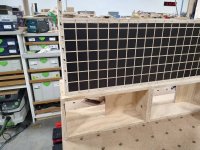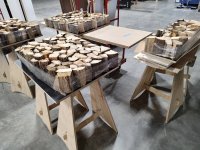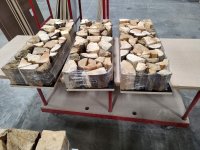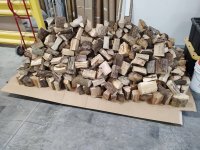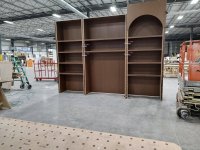Crazyraceguy
Member
- Joined
- Oct 16, 2015
- Messages
- 5,519
I built the cabinets themselves a couple of weeks ago, but had to deal with the wood treatment before making the panels. A few other things came up first and finally, today was the day.
These will be loose panels, to be inserted into the boxes, after installing them. I built a secondary box/fixture to attach the firewood blocks to a back panel. This turned into a giant game of "Battleship", with me calling out grid locations to my helper, who was shooting nails into them from the back.
We sawed a shallow grid into the sub-backs and it worked out great.
The installers are working this job now, so I should get some better pics eventually.
These will be loose panels, to be inserted into the boxes, after installing them. I built a secondary box/fixture to attach the firewood blocks to a back panel. This turned into a giant game of "Battleship", with me calling out grid locations to my helper, who was shooting nails into them from the back.
We sawed a shallow grid into the sub-backs and it worked out great.
The installers are working this job now, so I should get some better pics eventually.


